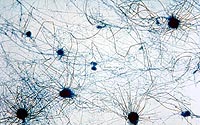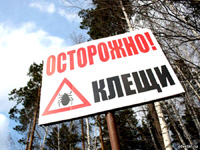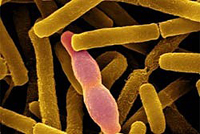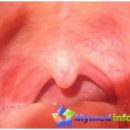Tetannik is a very dangerous disease, leading to death hardly at half past. He was known to people a long time ago, but the treatment appeared quite recently. That is why it is still very dangerous. Causes of tetanus and scary figures of statistics are looking for in the article.
Content
Another doctors of the ancient civilizations of Egypt, Greece, India and China drew the relationship between wounds and development of tetanus. For the first time the clinical picture of this disease was described by a hippocrate, who had a son from a tetanus. The study of this disease was engaged in Galen, Celsius, Alenet, Avicenna, Ambruz Pare and other famous antiquity doctors and Middle Ages.
Scientific study of the tetanus began in the second half of the XIX century. The tetanus causative was opened almost simultaneously in 1883 by the Russian surgeon. D. Monastic and in 1884 by German scientist a. Nichorer. The pure culture of the microorganism was allocated in 1887. Japanese microbiologist S. Kitazato, he is in 1890 g. got a tetanical toxin and together with the German bacteriologist. Bering created anti-bearing serum. In 1923, the French immunologist g. Ramon received a tetanical anatoksin, which began to be used to prevent the disease.
Tetinnake is found in all regions of the globe, but the incidence rate and the percentage of deaths increases as the equator approaches the equator. The largest distribution of the tetanus has in countries with a hot and humid climate, in areas where disinfection products are missing or poorly applied, preventive vaccinations and general care - that is, in poor and underdeveloped countries of Africa, Asia and Latin America. However, in developed states of Tetinnik annually carries thousands of lives.
In countries with a non-discovered change of seasons (tropics and subtropics), the disease occurs year-round, in countries with temperate climates has a pronounced seasonal character (the end of spring - the beginning of the autumn).
The frequency of the disease - 10-50 cases per 100,000 population in developing countries and 0.1-0.6 in countries with compulsory prevention.
80% of cases of tetanus accounted for newborns (when infected through the umbilical cord) as well as on boys up to 15 years due to their increased injuries. Among adults about 60% of tetanus occasions fall on elderly. The greatest percentage of the fallen and dead is observed in rural areas.
Mortality for tetanus disease is very high (above only rabies). Even with the use of the most modern methods of treatment, 30-50% of the fallen, and in the regions where preventive vaccinations and qualified medical care are missing - about 80%.
Mortality in newborns reaches 95%. Every year about 250 thousand people die from the tetanus in the world, the vast majority of them - newborns. However, given the possibility of a large number of unregistered cases and unfinished forms of the disease (especially in newborns), total losses from tetanus on the planet can be estimated at 350-400 thousand people annually.
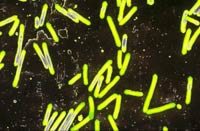 Tetanus causative agent - a tetanus wand is a bacterium living in the intestines of many animals, as well as a person. Being there, she does not harm. A large number of tetanus sticks is in the soil, where they can persist for a long time.
Tetanus causative agent - a tetanus wand is a bacterium living in the intestines of many animals, as well as a person. Being there, she does not harm. A large number of tetanus sticks is in the soil, where they can persist for a long time.
The causative agent acquires hazardous properties only when a living organism has lost on damaged fabrics, deprived of oxygen access. Especially dangerous or having deep wound pockets, where air does not fall.
The disease can develop during injuries and damage to the skin and mucous membranes, burns and frostbite, during childbirth, in newborns through the umbilical cord, cropped by the non-sterile tool, as well as in some inflammatory diseases, when the affected place is in contact with the environment (gangrene, abscesses, ulcers, breakdowns and T.D.).
Frequent cause of infection There are microtraums of the lower extremities - injuries, injections with sharp objects, barns, even the non-non-blood - therefore, the tetanus is sometimes called «Barefoot disease».
Once in the body, the tetanus wand allocates toxin - a very strong poison that affects the nervous system. As a result, almost all the muscles of the body begin to shrink - convulsions arise.



